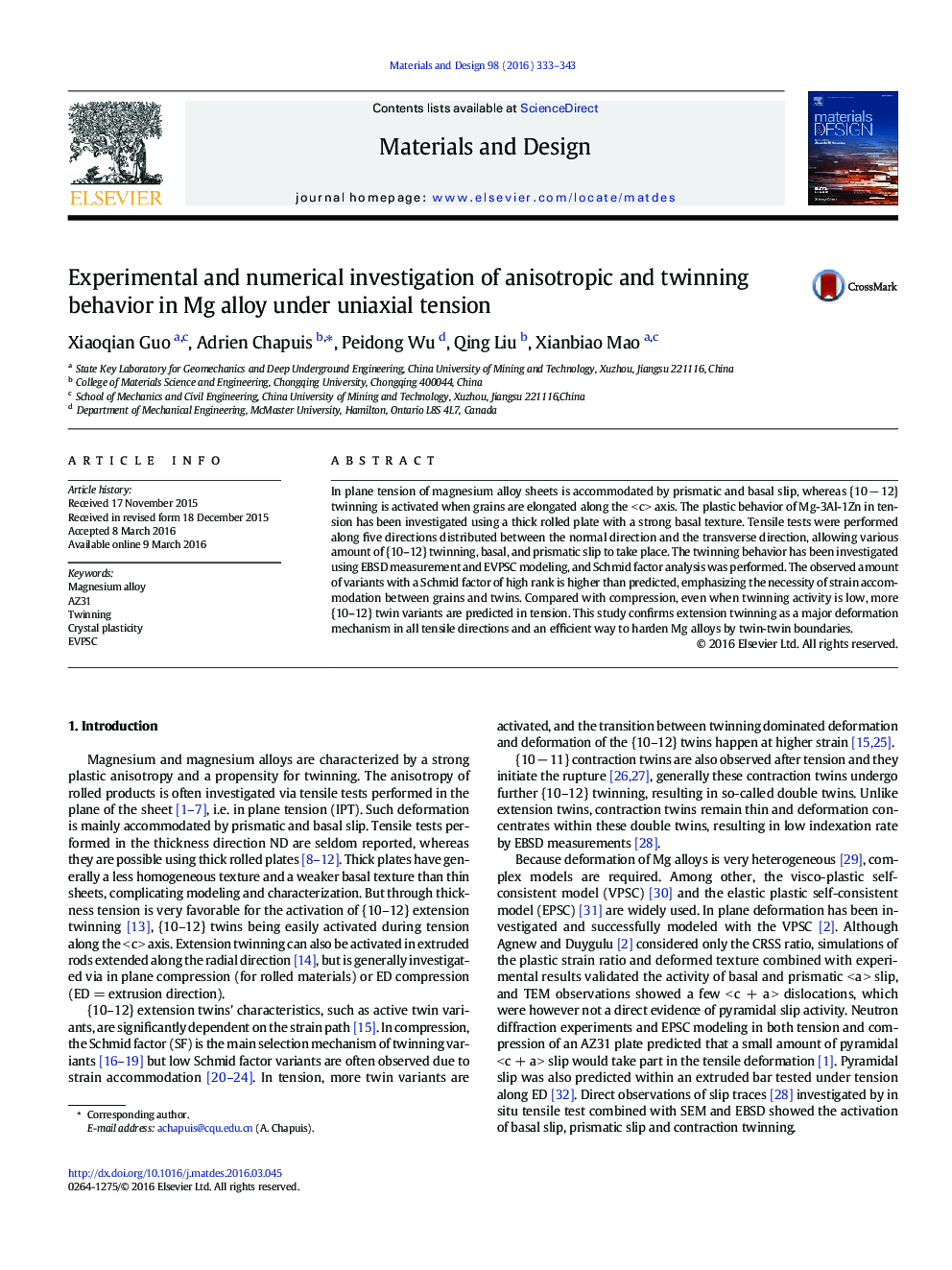| Article ID | Journal | Published Year | Pages | File Type |
|---|---|---|---|---|
| 828150 | Materials & Design | 2016 | 11 Pages |
•EVPSC-TDT simulations of the mechanical behavior in ND-TD plane of a magnesium alloy AZ31 thick rolled plate in tension•{10–12} twinning is activated and investigated in tension along different directions.•{10–11} twinning is also included in the EVPSC-TDT model for the first time.•More {10–12} twin variants of low Schmid factor are observed than predicted.•More {10–12} variants are predicted in tension than in compression.
In plane tension of magnesium alloy sheets is accommodated by prismatic and basal slip, whereas {10 − 12} twinning is activated when grains are elongated along the < c > axis. The plastic behavior of Mg-3Al-1Zn in tension has been investigated using a thick rolled plate with a strong basal texture. Tensile tests were performed along five directions distributed between the normal direction and the transverse direction, allowing various amount of {10–12} twinning, basal, and prismatic slip to take place. The twinning behavior has been investigated using EBSD measurement and EVPSC modeling, and Schmid factor analysis was performed. The observed amount of variants with a Schmid factor of high rank is higher than predicted, emphasizing the necessity of strain accommodation between grains and twins. Compared with compression, even when twinning activity is low, more {10–12} twin variants are predicted in tension. This study confirms extension twinning as a major deformation mechanism in all tensile directions and an efficient way to harden Mg alloys by twin-twin boundaries.
Graphical abstractFigure optionsDownload full-size imageDownload as PowerPoint slide
